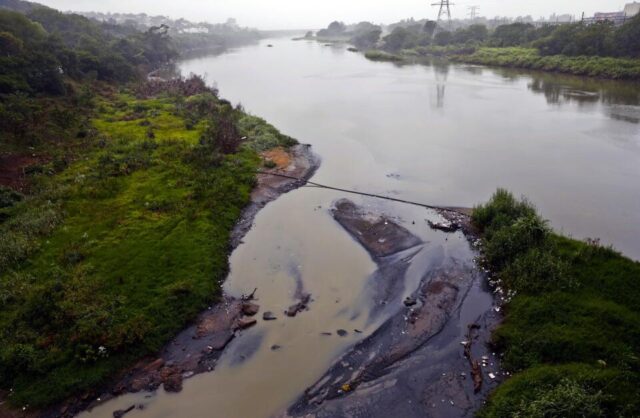Collaborative efforts between the government and the private sector have the potential to address this dire situation.
By Gerhart Britz
SOUTH Africa’s sewage crisis has dire consequences for public health, waterways, and ecosystems.
Outdated and poorly maintained wastewater infrastructure due to insufficient investment is one factor that results in poor waste management.
The strain of rapid urbanisation with inadequate sanitation facilities in informal settlements and the exacerbating impact of climate change through increased rainfall events are also factors that contribute to poor waste management.
Despite these challenges, there is room for optimism.
Collaborative efforts between the government and the private sector have the potential to address this dire situation, bringing forward practical, affordable solutions that hold the promise of a cleaner, healthier future for all communities.
A public health crisis: deadly waterborne diseases
South Africa’s persistent sewage crisis recently sparked a new cholera outbreak, primarily stemming from dysfunctional municipal sewerage systems.
Over 90% of the nation’s 824 treatment plants discharge untreated or partially treated sewage into our limited water resources. As of June 2023, the Department of Health had documented 1 045 suspected cholera cases across five provinces, with 197 cases confirmed by laboratory testing, directly linked to compromised water supply.
This crisis disproportionately impacts both urban and rural regions, where access to clean water and sanitation remains a pressing concern. Impoverished communities often rely on highly polluted water sources contaminated by sewage from overwhelmed treatment plants, further straining water purification efforts to meet safety standards. Recognising the intrinsic connection between drinking water quality and wastewater treatment is crucial, necessitating immediate attention and resolution.
However, a significant challenge faced by South African communities is the prohibitive cost of implementing waterborne sanitation solutions everywhere. With over four million latrines and roughly 50 million people lacking adequate sanitation, conventional waterborne systems are neither viable nor cost-effective comprehensive solutions.
South Africa’s water quality reports: red flags aplenty
The Blue Drop Report 2023, released in June 2023, paints a concerning picture of South Africa’s drinking water quality.
While major cities maintain safe water, outlying areas face contamination and infrastructure challenges. Key statistics from the report reveal that the average Technical Site Assessment (TSA) score for water treatment systems is 69%, indicating partial functionality.
About 15% of water supply systems are in poor or critical condition, with only 33% having water safety plans, posing significant risks to water quality. Additionally, 50% of municipalities struggle with bad or poor microbiological water quality.
Wastewater and water wasting: two major risks
The 2023 Green Drop Report assesses wastewater treatment systems, showing a decline with an average score of 50%. Regional disparities persist, with Eastern Cape and Limpopo scoring lowest, while the Western Cape and Gauteng lead. The No Drop Report examines water losses, revealing a decline in overall performance in 2023, with an average score of 65%, which means that one-third of supplied water is wasted before it reaches consumers.
These reports collectively underline the urgent need to enhance drinking water quality in South Africa. Municipalities must focus on prioritising infrastructure maintenance and upgrades, implement risk-based water quality management, and strengthen compliance with standards.
The Department of Water and Sanitation must offer more support to municipalities. Failing wastewater treatment facilities exacerbate drinking water purification, risking tap water safety and triggering further potential health and environmental crises.
Therefore, they must take steps to safeguard water quality and address sewerage infrastructure issues.
Rapid crisis intervention required
South Africa’s sewage crisis is a dire challenge that requires immediate action and innovative solutions. In recognising the inextricable link between sewage waste management and water quality, we must also acknowledge that this crisis cannot only be addressed by the government without support from private sector industry leaders and experts. Portable water treatment package plants are available, along with small filtration and sterilisation systems for communities.
Wastewater packaged treatment plants and solutions can help both alleviate immediate concerns and contribute to long-term sewage management strategies. Further neglecting the sewage problem and the critical maintenance of existing infrastructure will only deepen our water crisis.
For this reason, the government needs to prioritise investment in sewage treatment infrastructure and implement practical, affordable solutions across all communities.
Mitigating South Africa’s sewage crisis
If municipal water supplies deteriorate further, sanitation specialists will be required to step in with a range of interventions.
These extend from portable water treatment packaged plants to improve water quality at its source, to small-scale filtration and sterilisation systems designed for household use to ensure safe drinking water directly from the tap. From a contamination perspective, it is critical to reduce sewage entry into watercourses, particularly in rural areas and informal settlements. This can be achieved through enhanced sanitation solutions, such as dry sanitation toilets, which are waste-contained alternatives to pit latrines.
From immediate relief to sustainable futures
Interventions will need to consider both immediate and long-term strategies.
For short-term relief, containerised package plants can bolster sewage treatment facilities without the need for extensive infrastructure development, alleviating the strain on existing systems.
Simultaneously, sanitation providers in the private sector can aid municipalities in implementing long-term solutions, including megalitre plans that feature efficiently packaged treatment plants. By adopting these smaller, cost-effective alternatives, it is possible to achieve the same capacity traditionally associated with larger concrete plants, in a fraction of the time to avert total system collapse and the impending health and economic catastrophes that would surely follow.
Gerhart Britz is a director at Sanitech.
BUSINESS REPORT








